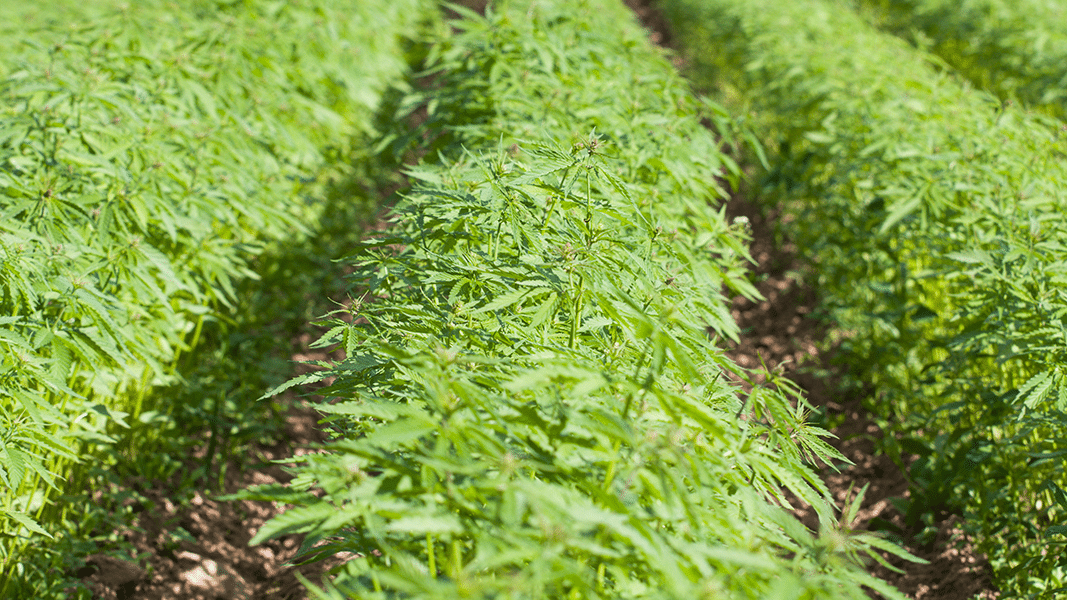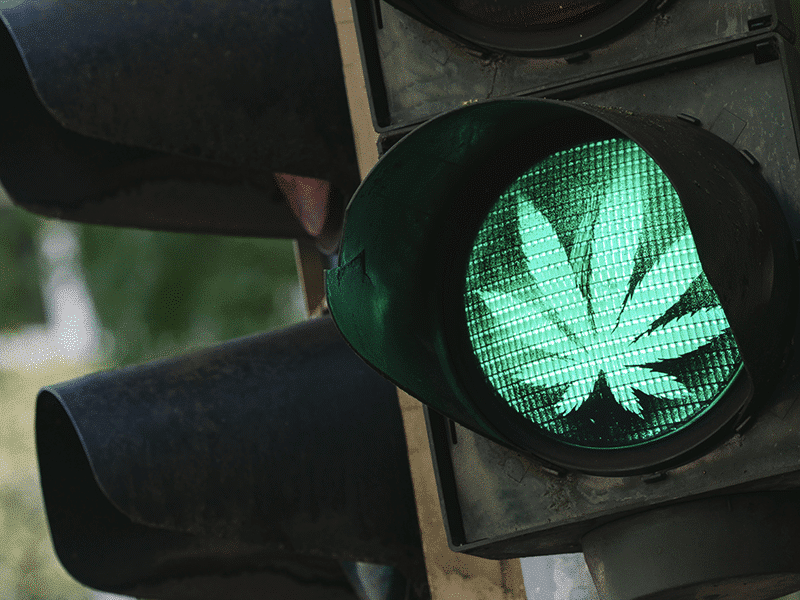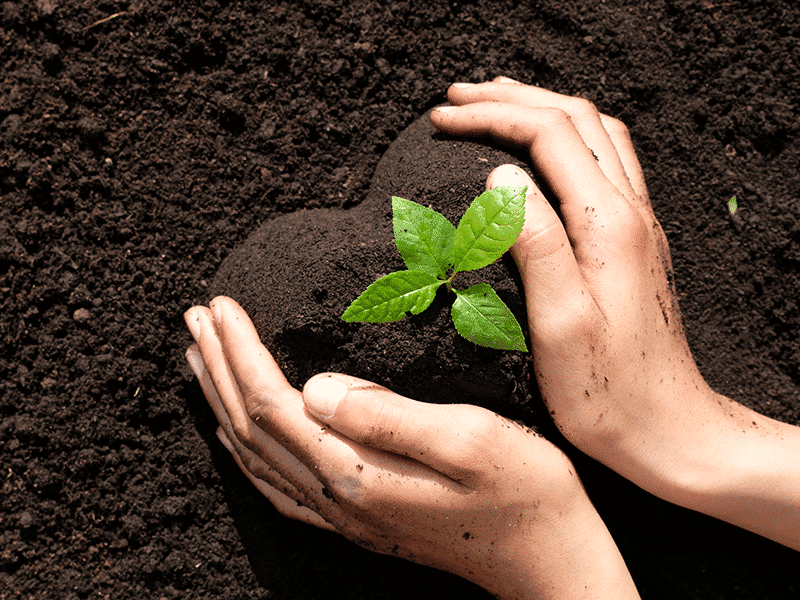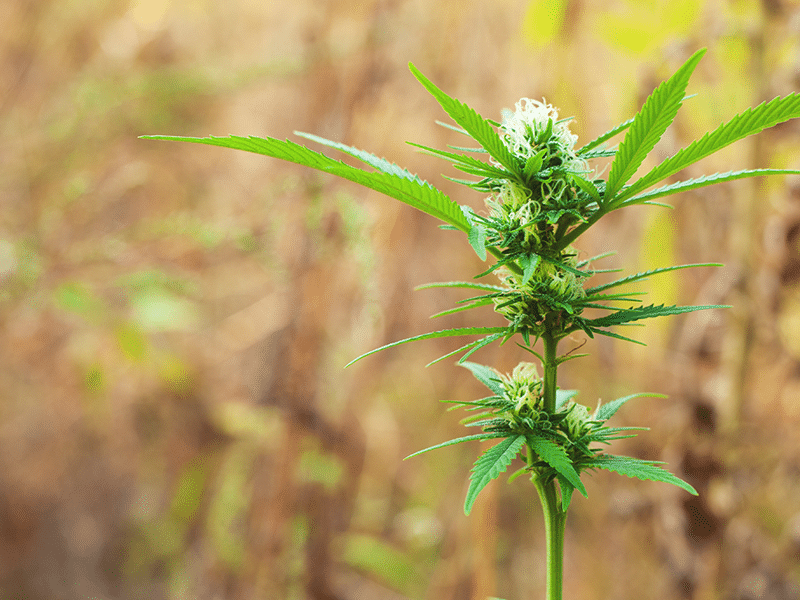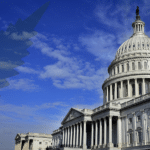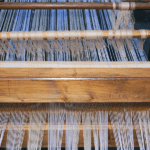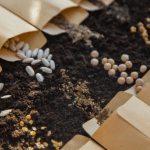A year has passed since President Trump signed the 2018 Farm Bill, which legalized the cultivation of industrial and CBD-rich hemp. This legislative breakthrough set the stage for the first largescale hemp harvest in the United States since the Second World War.
So, how’d it go?
The much-anticipated hemp harvest in the autumn of 2019 was looked to eagerly across much of rural America. Vote Hemp estimates that 230,000 acres of hemp were planted last year, an impressive figure for a fledgling agricultural sector. But a combination of factors — confusing regulations, bad seeds and bad weather, insufficient infrastructure, and a lack of experience with cannabis cultivation — contributed to crop failures that dashed the hopes of many first-time hemp growers.
Legal hemp had been plugged as a salvation for the nation’s struggling farmers — and the soaring popularity of cannabidiol (CBD) appeared to provide a booming market. The fashionable cannabinoid, when derived from hemp (cannabis with no more than 0.3% THC), was also legalized by the Farm Bill. US retail sales of CBD in 2019 were estimated at over $1 billion by the Hemp Industry Daily, a 133% increase over 2018 sales. And that figure is projected to jump to $10 billion by 2024.
Over 40 US states have now authorized hemp cultivation, bringing their laws into conformity with the Farm Bill. There were 3,800 licensed hemp growers in 2019, according to a study by the Pew Trust, with Colorado, Oregon, and Kentucky leading the way. Hemp Benchmarks estimated that the 2019 hemp harvest destined for the CBD market would reach 122 million pounds of biomass suitable for oil extraction, valued at over $2 billion.
Indiana’s Purdue Hemp Project predicted that cultivating hemp could generate up to $300 more per acre compared to corn and soybeans. But overproduction ended up driving down prices that farmers could fetch for their hemp crop.
Is Hemp the New Tulip?
The infamous “Tulip Mania” in 15th century Holland underscores how high hopes for a commodity’s market performance can lead to unsustainable overvaluation that is inevitably followed by a painful correction. There are already signs of this happening with the CBD hemp market. Moreover, farming is a notoriously risky business, and this also became inescapably clear in 2019.
Crop failure and bankruptcies among hemp farmers in Southern Oregon led to at least four suicides, because many acres were wiped out by mold, according to the local Mail Tribune. The region’s farmers lost anywhere from 30% to 100% of their crop in 2019, a year when more than 60,000 acres of hemp were cultivated in the Beaver state. “Sixty percent of the people who planted [in 2019] won’t plant next year,” predicted Matt Ochoa of Ashland-based Jefferson Hemp Exchange. “A lot of people are broke.”
Despite such disasters, a significant amount of hemp was grown in the United States last year. Unfortunately, overproduction contributed to a steep decline in prices. Between April and October, the wholesale price for biomass used for CBD extraction plummeted between 42% and 53% (depending on volume sold), according to Connecticut-based New Leaf Data Services. The price for hemp flower with a 10% CBD concentration dropped from around $40 a pound in 2018 to less than half that by the end of 2019. “I’m two years in and I’ve made nothing.” Brian Ford, a farmer in New York’s Orange County, complained to the local Times Herald-Record.
Sixty-five percent of US hemp farmers could not find a purchaser for their crop last summer, according to a survey by Whitney Economics. The report noted that industrial hemp still has significantly less developed infrastructure than other crops, so growers can’t count on selling their harvest to a local grain elevator.
Poorly crafted state regulations have also been a cause for concern. The Columbus Dispatch reported that Ohio farmers feared the state’s proposed hemp regs, which require that at least 1,000 plants be grown on at least a quarter acre, would squeeze out smaller operators.
And there were other production snafus, including fraudulent hempseed sales. The Seattle Times reports that the Kentucky firm Elemental Processing filed a lawsuit in September claiming it was supplied with 6.4 million unusable hemp seeds from Oregon-based HP Farms. Elemental sold these seeds to Kentucky growers, who ended up having to plow under their crops. Elemental claims the seeds were almost entirely males, whereas only female hemp plants produce a viable CBD-rich flower. The suit seeks $44 million in damages. HP Farms denies the allegations. The case is currently pending in Multnomah County Circuit Court. Similar lawsuits involving seed sales have been filed in several other jurisdictions.
The 0.3% Dilemma
Hemp’s uneasy relationship with marijuana (as in resin-rich, THC-laden psychoactive cannabis flower) has also caused trouble for famers. The arbitrary 0.3% THC limit that makes hemp “hemp” under federal law is particularly problematic.
Protocols for enforcing this limit were spelled out in the US Department of Agriculture’s interim regulations for hemp cultivation. Released in October 2019, the new regs require testing a sample “from the flowering material” of hemp, the part of the plant with the most cannabinoids. What’s more, the testing must be conducted at a DEA-approved lab within 15 days of anticipated harvest, which will increase the likelihood of finding “hot” crops that have too much THC to qualify legally as hemp.
A lot of hemp plants grown in 2019 had to be destroyed because they tested slightly higher than 0.3% THC, an amount that falls significantly short of the THC percentage needed to cause a psychoactive or impairing effect. And the USDA predicts that in 2020 one in five lots of hemp will need to be destroyed for exceeding the THC limit, according to estimates published in the Federal Register.
Although the proposed USDA rules were roundly criticized by would be hemp farmers and CBD entrepreneurs, the regs include at least one redeeming point: American farmers won’t be considered in violation of federal law unless their hemp tests above 0.5% THC. Growers will not be prosecuted if their hemp tests within the range of 0.3% to 0.5%. However, all hemp that fails to meet the 0.3% limit will have to be destroyed — even in states like Colorado and Oregon, where cannabis has been legalized for adult use.
This a bittersweet development for hemp advocates who have fought long and hard for many years to legalize the plant by emphasizing that hemp, a non-intoxicating multipurpose plant with thousands of industrial applications, is not the same as marijuana, which people smoke to get high — and, therefore, hemp should not be classified as a controlled substance. The strategy of distinguishing industrial hemp from high-resin cannabis has resulted in some ironic and unanticipated snags. In California, for example, hemp-derived CBD products can’t be sold in a marijuana dispensary because state law only permits the sale of marijuana-derived products in state-licensed storefronts. And in states that have legalized marijuana, hemp farmers can face prosecution and crop eradication if their plants weigh in with slightly more THC than the Farm Bill allows.
Razing Hemp
In November, National Public Radio interviewed Wisconsin hemp farmer Phillip Scott, who grew 37 acres last season — but had to burn 10 acres to the ground for testing 0.1% over the THC limit. Reuters profiled Dan Maclure, a farmer who similarly had to destroy part of his harvest for testing “hot” in Vermont, a state with legal cannabis. “It’s heart-wrenching thinking about all the work and money you put into it,” said Maclure, who farms in Barton, just below the Canadian border. “I’m not sure I’m going to be venturing out in this again.”
Having to keep the THC level so low can also pit hemp farmers against nearby outdoor marijuana growers. You’d think these two groups would be natural allies, but the risk of cross-pollination from hemp fields threatens the high THC levels in marijuana plants highly valued for exactly that. In October, the USDA awarded $500,000 to a Virginia Tech research team to study the question of cannabis pollen drift, the Denver Post reported. Meanwhile, Northern California’s Humboldt and Sonoma counties temporarily blocked hemp production to protect marijuana grows from potential cross-pollination.
The confusion between hemp and marijuana has caused other mishaps. In November, New York City police confiscated 106 pounds of legal, CBD-rich hemp after mistaking it for its psychoactive cousin. Felony drug trafficking charges were brought against Green Angel CBD, the local retailer who ordered the shipment from Fox Holler Farms in Vermont. Fortunately, the Brooklyn District Attorney dropped the charges in December — and the hemp was subsequently returned to Green Angel.
Then there was the maddening case in Idaho, where state police seized a truckload of what turned out to be hemp in January 2019. The cops called it the “biggest drug trafficking bust in state history,” and a judge ruled the material would not be returned to the company that shipped it. The Colorado firm Big Sky Scientific, which had ordered the hemp from Oregon, sued to recover its losses. The Idaho courts remained intransigent even after the USDA itself issued a legal opinion in favor of Big Sky.
Legal Ambiguities
Unlike the Department of Agriculture, the US Food & Drug Administration (FDA) has still failed to issue regulations on use of CBD as a food ingredient or a nonpharmaceutical health supplement. The FDA is dragging its feet despite Congressional pressure, opting instead to issue dubious warnings about CBD possibly causing liver damage and officially censuring 15 companies for making unsubstantiated medical claims about CBD products. House Agriculture Committee Chairman Colin Peterson (D-MN) recently introduced a bipartisan bill that would clarify federal law by ordering the FDA to declare CBD a dietary supplement and regulate it as such.
It’s also not clear whether federal law now allows the importation of hemp. After the Farm Bill was passed, California’s Innovative Nutraceuticals went to court seeking restitution for a shipment of hemp it had ordered from Spain in 2015 that was seized by Homeland Security for containing CBD. But a federal district court in Los Angeles turned down the request, as the CannaLaw blog notes.
These lingering legal ambiguities are contributing to the stigma that still attaches to hemp and CBD, a hangover from prohibition (“reefer madness lite”). Legal hemp farmers are being dropped by financial institutions that deem the industry too risky, reports New Food Economy. And Facebook continues to bar hemp promotion or advertising. The Hemp Industries Association has joined with Denver’s Hoban Law Group, Colorado CBD producer Bluebird Botanicals, and Nebraska-based farm equipment supplier Bish Enterprises to launch a “Hemp is Legal” campaign, hoping to overturn Facebook’s anachronistic policy.
In an effort to clear up some of these dilemmas and encourage the growth of the fledgling hemp industry, Rep. Tulsi Gabbard (D-HI) introduced the Hemp for Victory Act. It is named after the World War II-era USDA campaign that encouraged hemp production for the war effort under a temporary emergency dispensation from the 1937 Marijuana Tax Act, which effectively prohibited all forms of cannabis. The Gabbard bill, if passed, would instruct the USDA and other agencies to clarify federal regulations and to carry out research on the various applications and benefits of hemp — not just CBD.
Whatever Happened to Food, Fuel & Fiber?
Project CBD recently spoke with Peter Allis, a homesteader in upstate New York’s Cayuga County, who has for years been growing vegetables for local markets and is now hoping to transition to hemp. Like many hemp cultivators, his crop last summer was badly damaged by mold. Allis is also intent on going organic. He notes that nearby Cornell University, which has established a hemp extension program, is recommending 200 pounds of nitrogen and 90 pounds phosphorus per acre. “Farmers say they can’t afford that much, especially if there’s no market for it,” Allis says.
Allis opted not to use fertilizer — “just planted and let it go” – initially with good results. “It was averaging five inches of growth a day until it matured, but it only got six feet or a little more instead of 10 feet.” He says it cost him just $150 per acre to grow, as opposed to $1,000 per acre if he had used chemical fertilizers. He attributes the growth leveling off to competition from weeds, and he believes this could be corrected by using more seeds per acre, making for a tighter canopy that will deny the weeds sunlight.
Allis sees an ecological imperative to grow hemp, and to do it without chemical fertilizers, which contaminate and deplete the soil. He also fears that the traditional industrial uses of the crop, especially for fiber, are being forgotten amid the CBD craze. “Hemp builds soil by shedding biomass as it grows,” he says. “It sheds leaves, which go back into the ground — as opposed to cotton, which is one of the heaviest feeders on the soil that there is. A third of the world’s herbicides and pesticides are used on cotton, and hemp produces ten times as much fiber per acre.”
In Allis’ vision, diversified uses of the plant are critical if it is to be the boon for small farmers as it was once hailed. “Everyone wants to go plant 100 acres, and then they complain that they lost all this money. If a lot of people grew a small crop instead of a few people growing a big crop, the learning curve would increase. Processors won’t come and build anything until there is something to process, but nobody’s interested in fiber because they think they can make more money off the CBD.”
“My whole thing is soil health and air quality,” Allis elaborates. “Hemp removes heavy metals and contaminants from the soil. It removes carbon out of the air, and it puts a huge amount of organic matter into the ground every year. I’d want to see several million acres planted coast to coast, and CBD can’t sustain that.”
“My grandfather grew hemp, and as a boy I remember him saying, ‘It’s better than fertilizer’,” Allis recalls. “He said that banning it was the biggest atrocity the government ever did, and it had a huge impact on family farms. A lot of farmers didn’t know the Congressmen were talking about hemp, because they just kept saying ‘marijuana, marijuana, marijuana.’ But now that it’s legal again, we can get farmers to start planting land that’s been taken out of production and help save local farms.”
Bill Weinberg, a Project CBD contributing writer, is a 30-year veteran journalist in the fields of drug policy, ecology and indigenous peoples. He is a former news editor at High Times magazine and produces the websites CounterVortex.org and Global Ganja Report. © Copyright, Project CBD. May not be reprinted without permission.
Recommended Readings
Green Rush Blues: California Cannabis After Legalization
Part 1 of our 3-part series: Eco-Crisis: Will Legalization Save California’s Forests?
Healthy Soil, Healthy Gut, Healthy Brain
Project CBD interviews Kelly Dunn and Josh Sarvis about sustainable and regenerative growing practices.
The Future of High-CBD Hemp
New developments in CBD genetics are about to shake up the cannabis industry.

